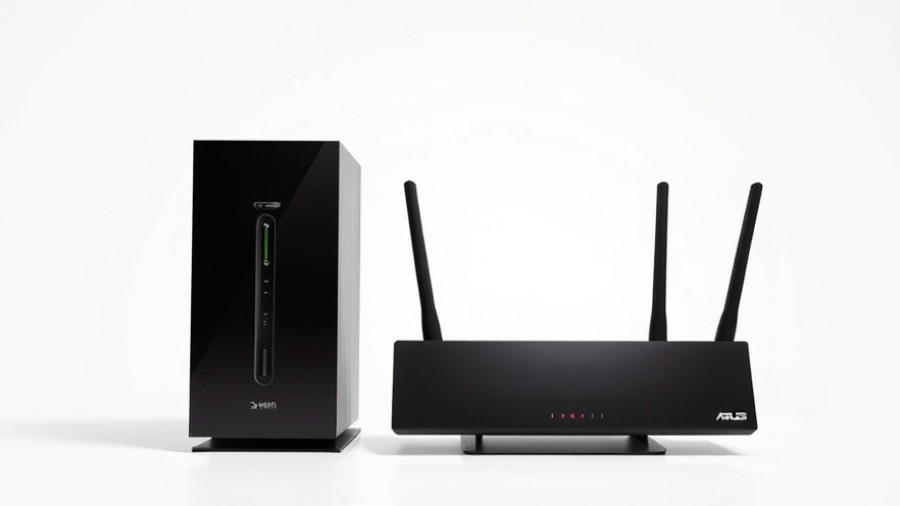
A Comprehensive Look at Asus ZenWiFi BD4: Destiny of Your Smart Home
With an increasing number of devices demanding reliable Internet access in our homes, having a robust wireless network is more important than ever. Gone are the days when a single router sufficed for all your streaming, gaming, and smart home needs. Enter the Asus ZenWiFi BD4, a dual-band mesh Wi-Fi system promoting its impressive speeds of up to 3600 Mbps and aimed at covering spaces larger than traditional routers. But does it really deliver on its promises?
Seamless Setup: Making Networking Accessible
The installation process is designed for simplicity. Asus provides quick-start guides that emphasize using the Asus Router app for a painless setup. Although some users found the lack of detailed documentation concerning pairing additional routers slightly concerning, many discovered that the automatic connection feature worked flawlessly, creating a seamless mesh network throughout their home. This is particularly beneficial in an age where smart home devices are proliferating, requiring quick and easy connectivity.
Design and Performance: Function Meets Style
The aesthetic appeal of the Asus ZenWiFi BD4 is worthy of note, with a stylish design that blends into any home environment. Each unit features dual 2.5Gbps Ethernet ports, accommodating both WAN and LAN connections, which can be advantageous for users with high-speed infrastructure. However, while the performance metrics sound promising, several reviews indicate that the ZenWiFi BD4 might not be the performance champion it claims to be compared to standalone routers, especially when considering the impact of the mesh architecture on bandwidth.
A Comparative Analysis: ZenWiFi BD4 vs. The Competition
Reviewers have pointed out that while the ZenWiFi BD4 presents a compelling case as a budget-friendly mesh Wi-Fi solution, it doesn't always outperform its contemporaries. The Asus ZenWiFi BD5, for instance, presents slightly higher performance metrics, but is priced higher. If you're already connected with extensive Ethernet cabling, investing in a regular high-performance router could yield both better speeds and user experience.
Connectivity Challenges: Trade-offs of Mesh Systems
Despite the claimed substantial coverage, it's essential to understand the performance compromises that often accompany mesh networks. As noted, the mesh architecture inherently divides some bandwidth between devices, which may lead to slower speeds in specific setups. The ZenWiFi BD4 has shown mixed results, performing below expectations against competitors like the TP-Link Archer BE550. Users typically note better performance when utilizing wired backhaul, affirming that mesh networks can sometimes introduce latency.
Key Features and Their Impacts: Understanding the Advantages
The ZenWiFi BD4 offers a significant array of features. Its dual-band networking setup supports both 2.4GHz and 5GHz frequencies, providing ample flexibility for a variety of devices. Additional functionalities such as multi-device management, parental controls, and advanced security features showcase Asus's commitment to providing users with a robust networking experience. The integrated Bitdefender security is particularly appealing for households with numerous connected devices.
Cost Considerations: Budget-Friendly or Too Good to be True?
At a competitive price point, the Asus ZenWiFi BD4 tries to make Wi-Fi 7 accessible to the average consumer. However, this affordability comes with some compromises in bandwidth and performance compared to more expensive models. Depending on your space, user needs, and whether extensive coverage is paramount, investing in a more expensive system might be more advantageous in the long run.
Final Thoughts: Is the ZenWiFi BD4 Worth It?
The Asus ZenWiFi BD4 mesh system can be a strong contender for tech-savvy consumers looking for an affordable way to enhance home connectivity. Its ease of setup and stylish design cater to modern households, pairing ease of use with smart home capabilities. However, potential buyers should remain mindful of the mixed performance reviews and the inherent limitations of a mesh system. Ultimately, for those seeking dependable performance over vast areas without breaking the bank, the ZenWiFi BD4 might just be the solution for your smart home.
 Add Row
Add Row  Add
Add 




Write A Comment